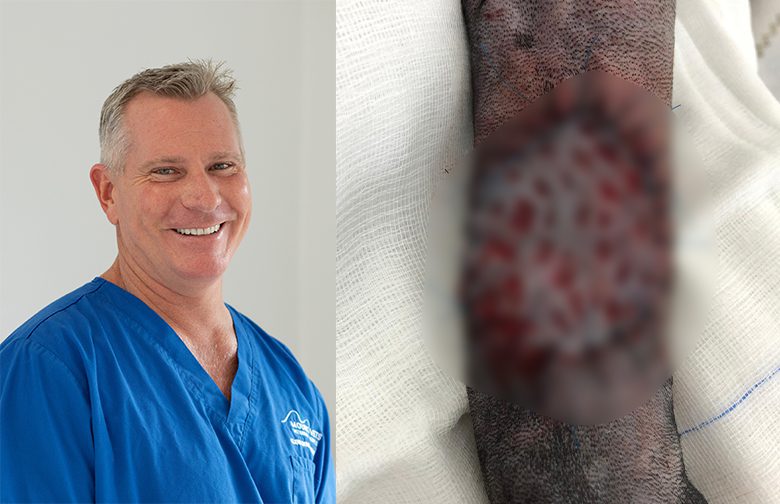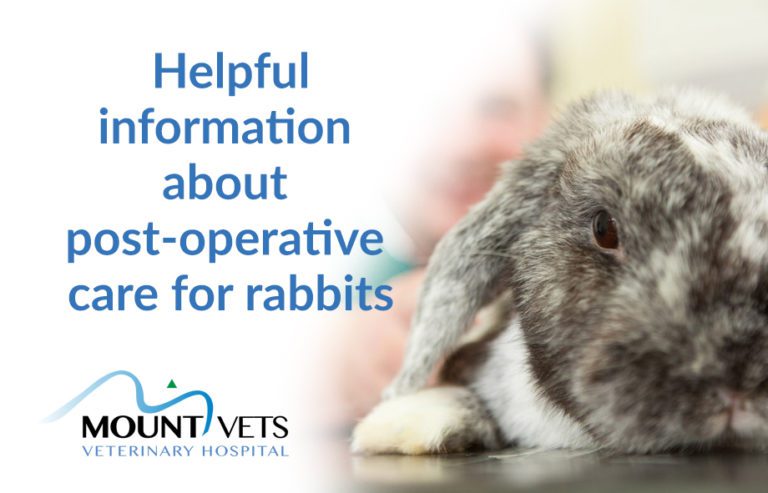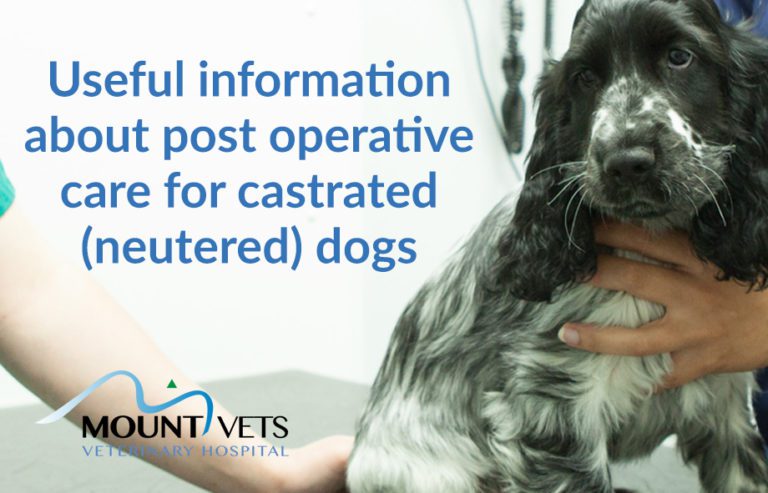WARNING
This page contains uncensored, graphic post-surgery images. If you do not wish to view these images, please do not continue to scroll down.
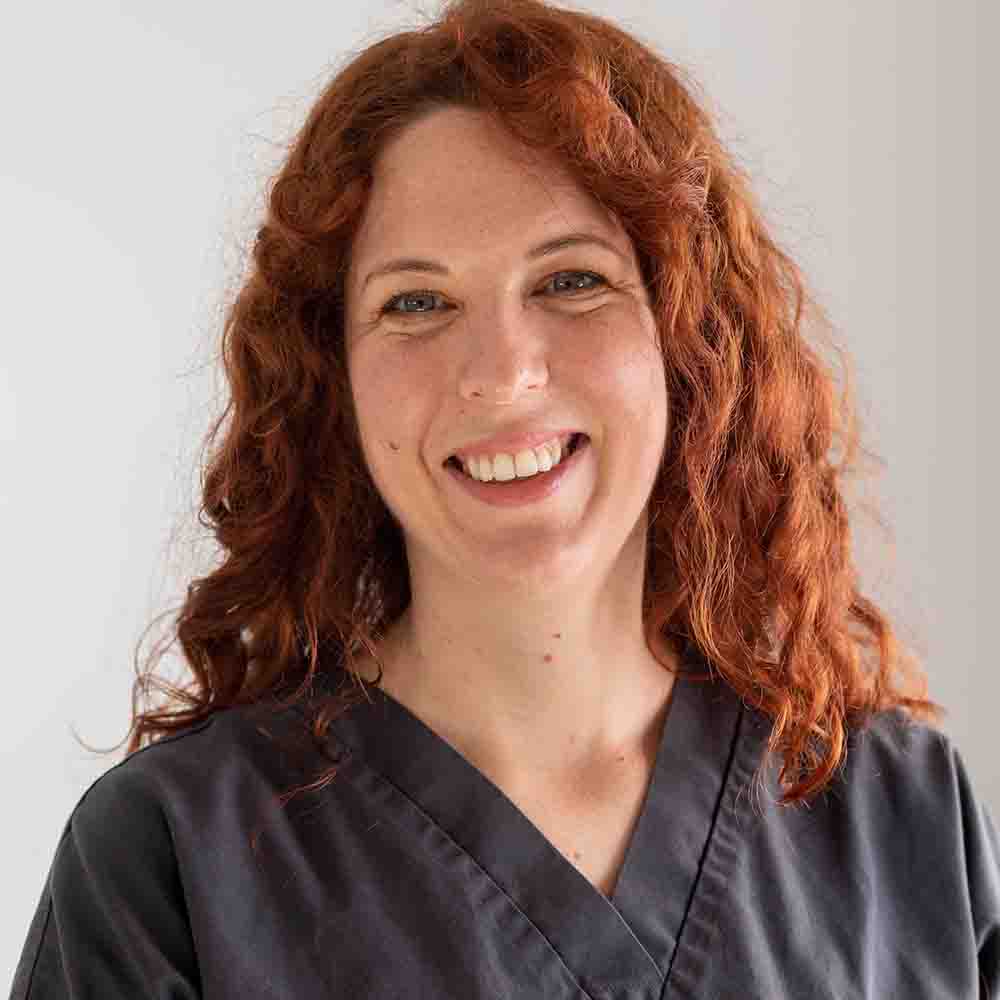
Izabella Boda
Initial consultation
10 year-old labrador retriever Oscar was brought in following a 1.5cm mass which suddenly appeared on his forearm. It was bothering him so his owners made the right decision on bringing him in to see a vet. Oscar was initially seen by vet Izabella who took a sample of the mass and sent it off for testing. The following day we received the lab results from cytology (examination of cells). The report indicated towards a soft tissue sarcoma; meaning cancerous cells of the connective tissues. Upon the findings, Izabella called Oscar’s owners to discuss the report and invite them to come in and talk to vet Glenn.
Internal Referral
While Izabella is a very good vet, particularly with exotic animals, she discussed Oscar’s case with Glenn who has extensive experience with more uncommon soft tissue surgeries. Glenn was happy to take Oscar on, knowing their only real option would be to remove the soft tissue sarcoma and perform a skin graft with healthy tissue. Glenn called Oscar’s owners and explained that they would either need to go through with the surgery, amputate his leg or consider Oscar’s quality of life as the mass would continue to grow and continue to bother him. Two days later, Oscar’s owners brought him in to the hospital to have the surgery and remove the sarcoma.

Glenn Bengtson
Removing the sarcoma
Glenn removed the sarcoma with 2cm margins to ensure all the defective cells were removed and the sarcoma wouldn’t return. Due to the depth of the reactive zone (see diagram), Glenn had to cut down to the muscle and therefore can’t put a skin graft over the area in the same day. Oscar would have to wait until the deep fascia regenerated itself so the blood supply to the new skin graft had a better chance to ‘take’. While we waited for Oscar’s deep fascia to heal, Oscar wore a bandage over the area which concealed a special gel designed to re-hydrate necrotic tissue and keep out any bad bacteria. The sarcoma was sent off to histology to confirm the cytology report.
Deep fascia usually takes 10-12 days to heal enough so the skin graft procedure can be performed. During this time the histology results came back and were able to provide Glenn with a bit more information into the sarcoma. Using Dennis et al (2011)’s grading system, the differentiation of cells, level of necrosis (dead cells), and level of mitosis (simply put, cells that have split into two) gave Oscar’s soft tissue sarcoma a total score of 4 which indicated a grade 2 (intermediate) sarcoma. Grades are given depending on the potential for it to reoccur after removal but also to metastasis, which means cancerous cells spreading to other parts of the body. Grade 1 is the least aggressive and grade 3 is the most aggressive.
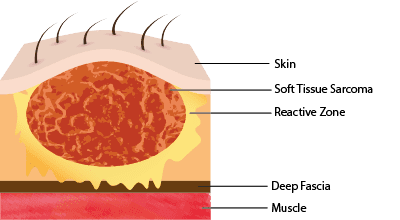
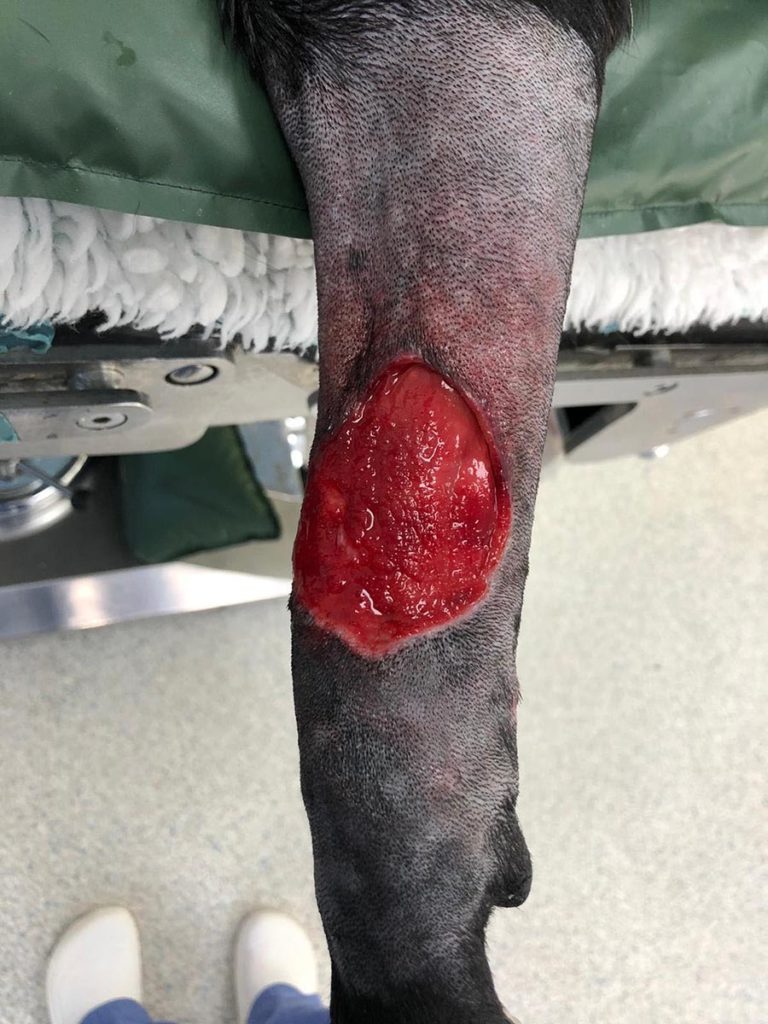
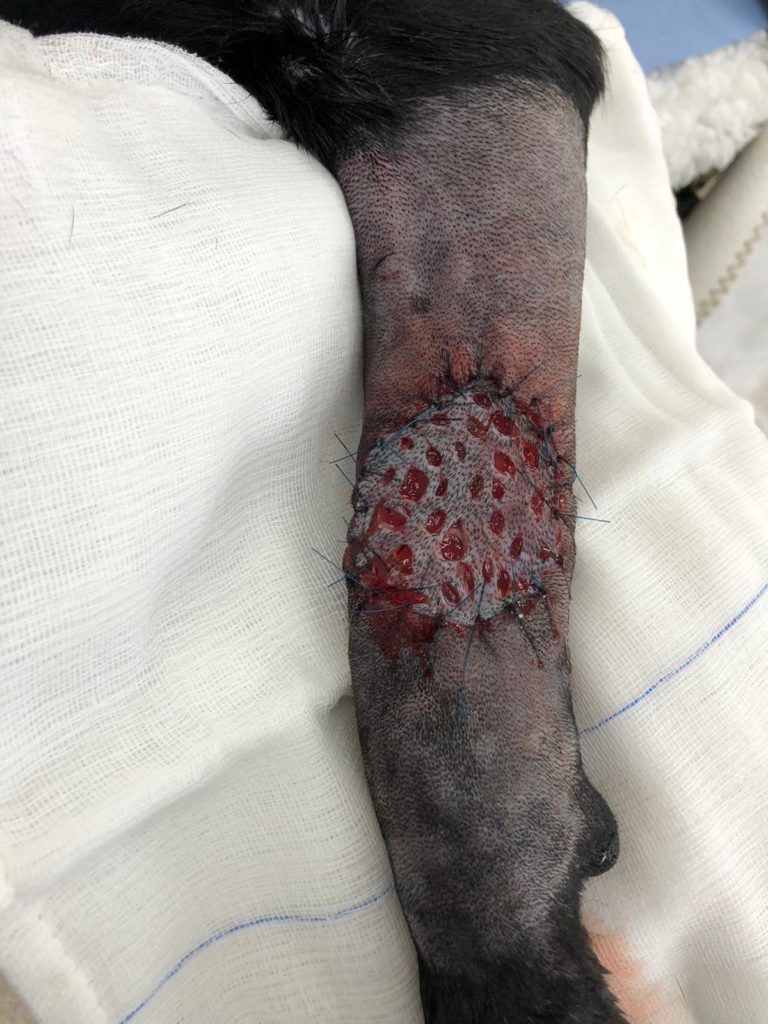
Applying the skin graft
Once the deep fascia had healed enough, Glenn had Oscar in surgery for the second and final time. Glenn harvested a section of skin from Oscar’s chest wall and removed the fat from it. This is an important step as leaving the fat on could prevent the body from adopting the skin graft.
Glenn then fenestrated (made small incisions) the skin graft to create a mesh. The mesh allows for fluid to pass through Oscar’s skin and onto his dressing rather than accumulate in the wrong place, prevent healing and acceptance of the skin graft.
As the skin on Oscar’s leg had healed at the edges, Glenn had to trim these to provide the skin graft with something to adhere to. Oscar’s skin graft was then sutured on and his leg bandaged.
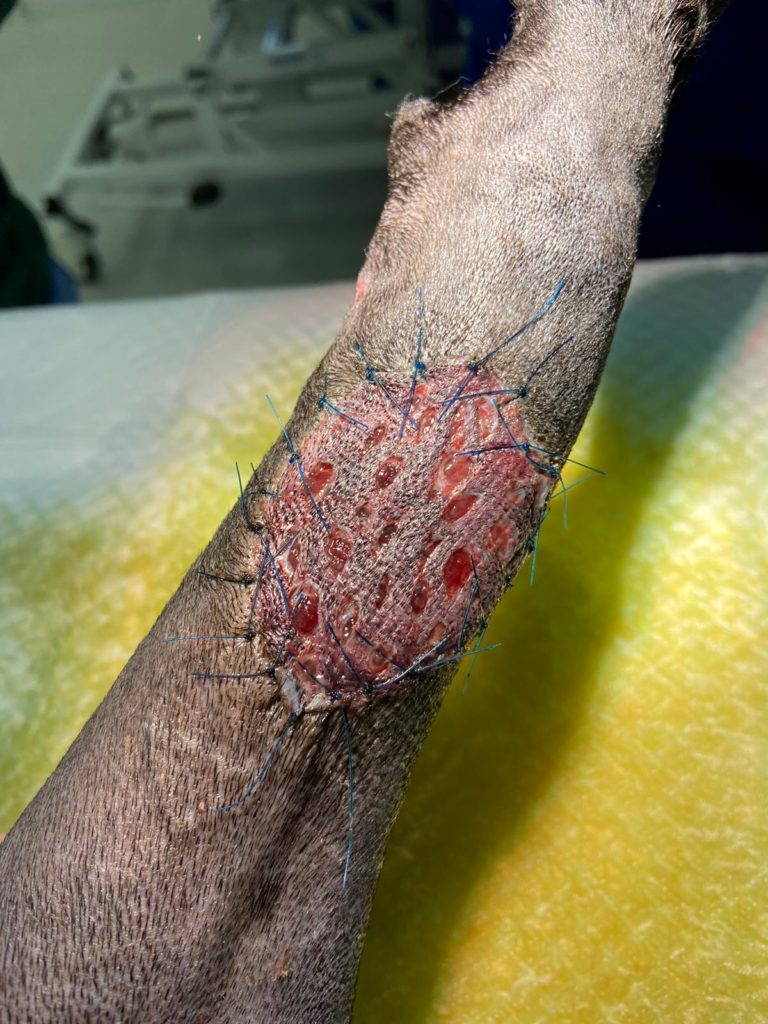
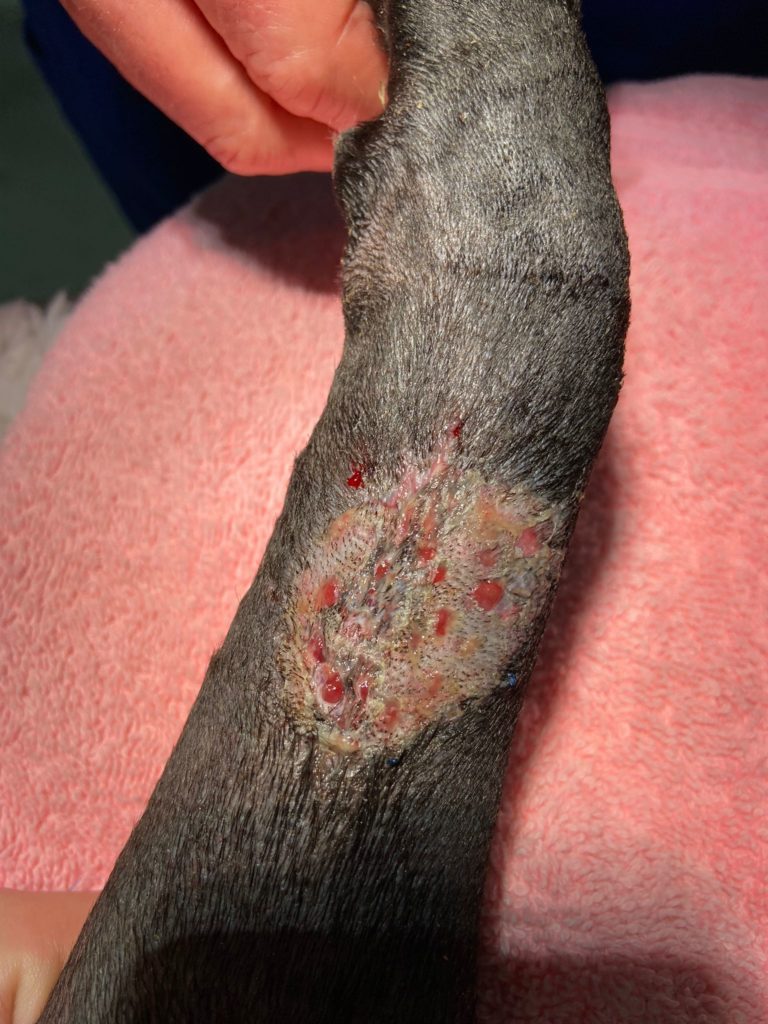
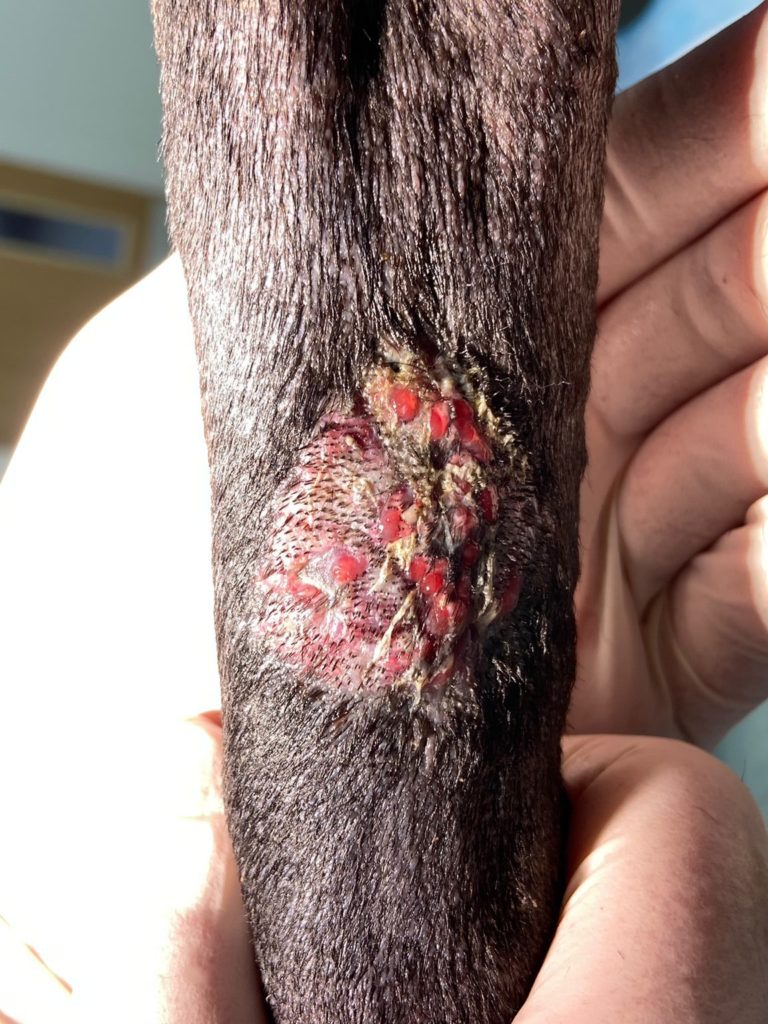
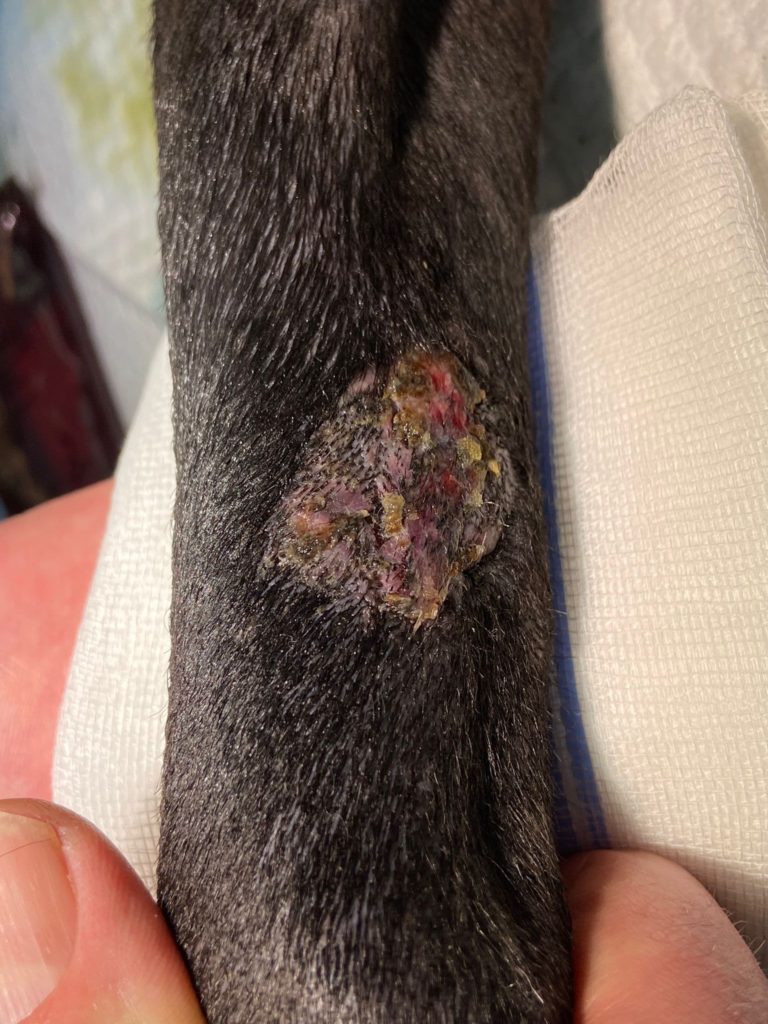
Post-surgery
2 weeks following Oscar’s skin graft surgery, the skin graft was virtually 100% adopted by Oscar’s leg. We then had a delicate balancing act between keeping Oscar’s foot bandaged to prevent it from swelling up, but removing his foot from the bandage to stop it from sweating and potentially infecting the healing area.
One week after the skin graft had fully integrated with his leg, Oscar’s bandage was removed and he was able to go on light walks on the lead. His owner could also apply cream at home to nurture the healing process.
7 weeks following Oscar’s initial surgery to remove the sarcoma, Oscar was fully healed and signed off! It will take a little while longer for his coat to grow back in the area, and some of it may never grow back, but he’s much happier and his cancer prognosis is looking good.
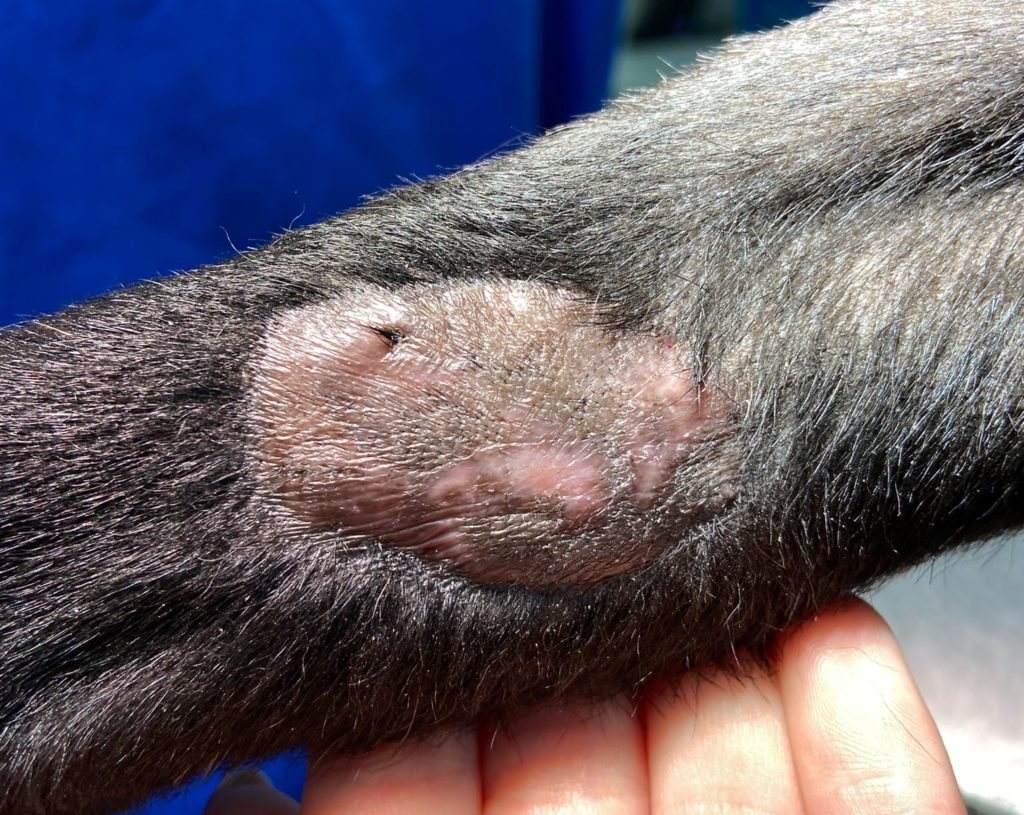
Oscar’s owners recently sent in this photo (below) of his leg, almost 12 weeks post-op. They did report he is almost back at full speed and there is a surprising amount of hair growth now which is brilliant!
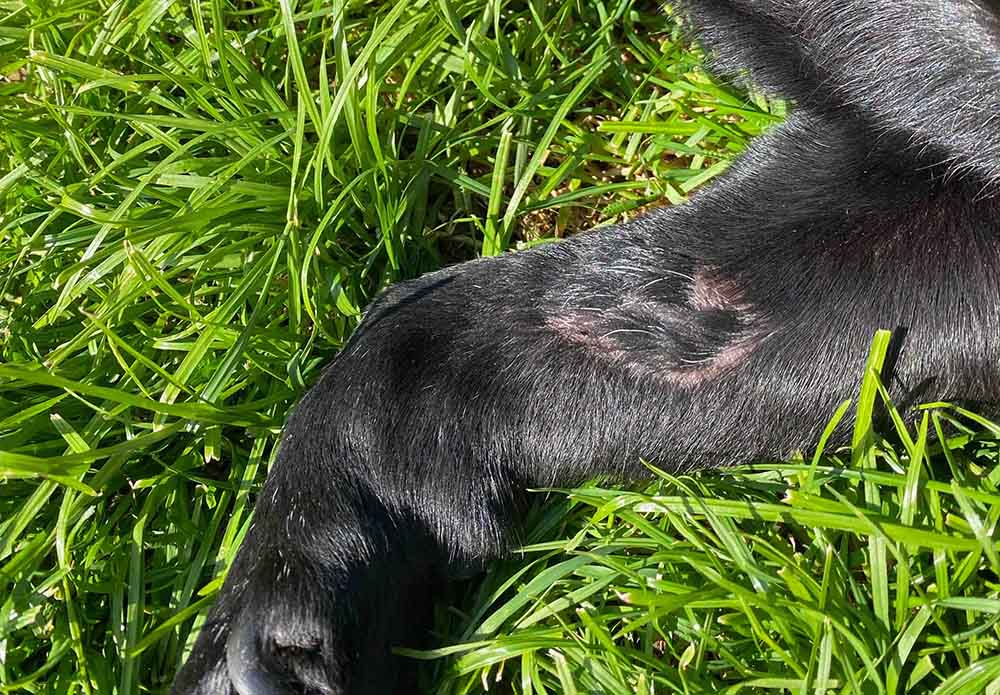
How to prevent & recognise soft tissue sarcomas
While a few cancers have been linked to sun exposure and inhaling smoke from owner’s cigarettes, in most cases soft tissue sarcomas are genetic and therefore not preventable. The only thing you can do as a pet owner is keep your eye out for any lumps and bumps that have either suddenly appeared or continued to grow over a number of years.
There of lots of things a lump or bump could be and not all of them are harmful, but it’s best to check with us if you’re concerned. We also recommend insuring your pet to cover for times like this as they can be costly.
